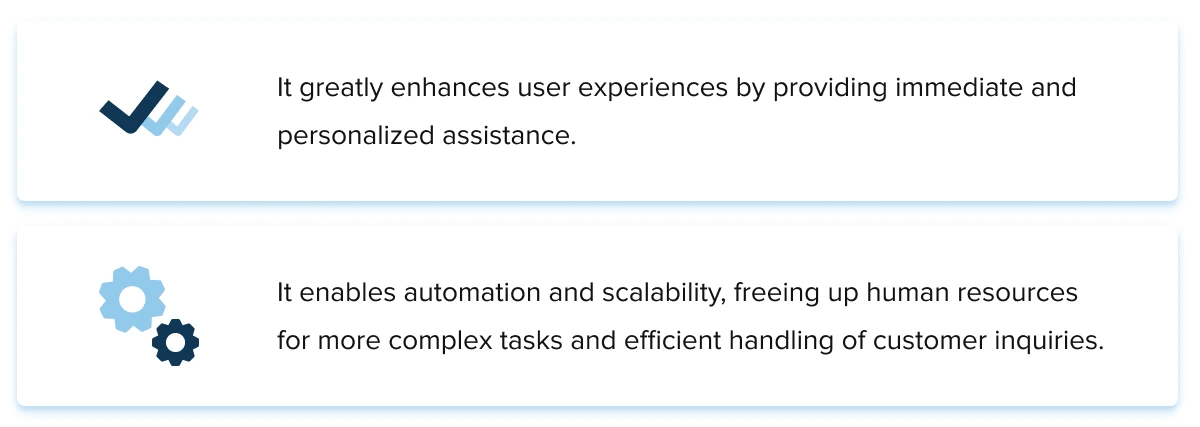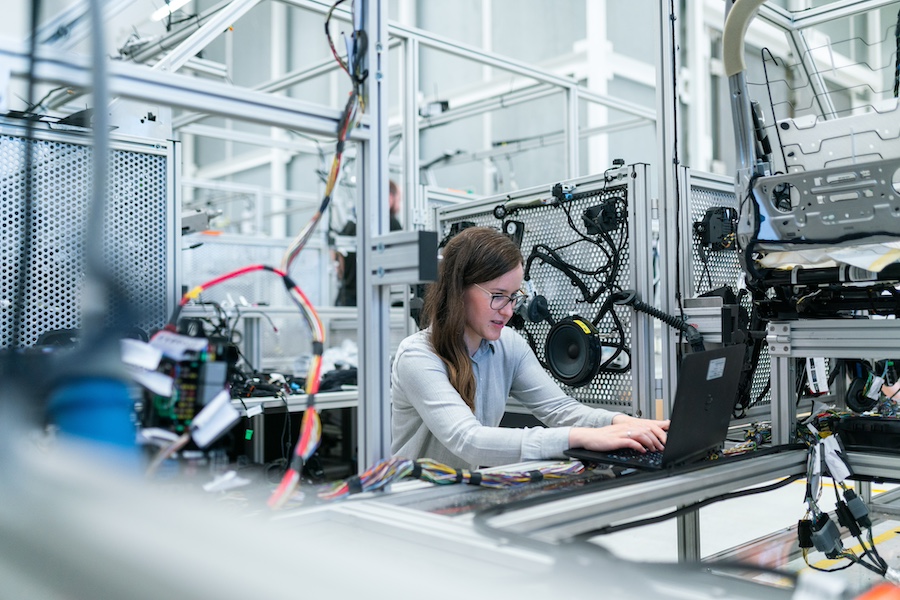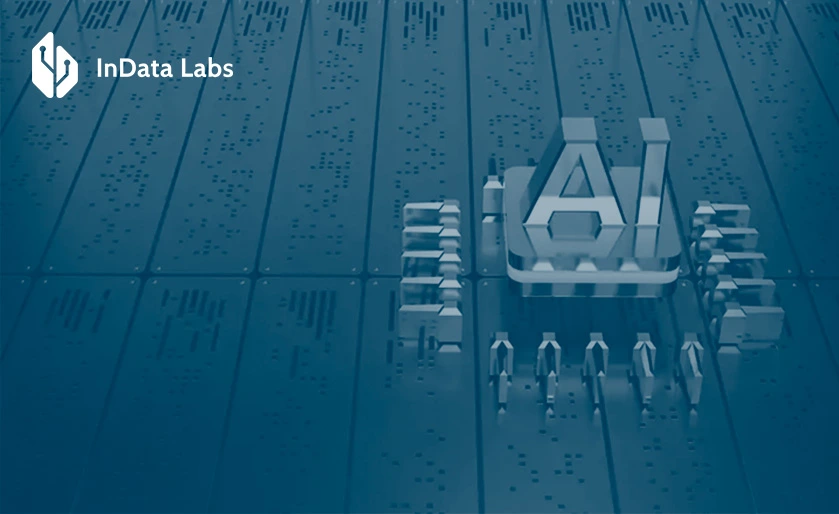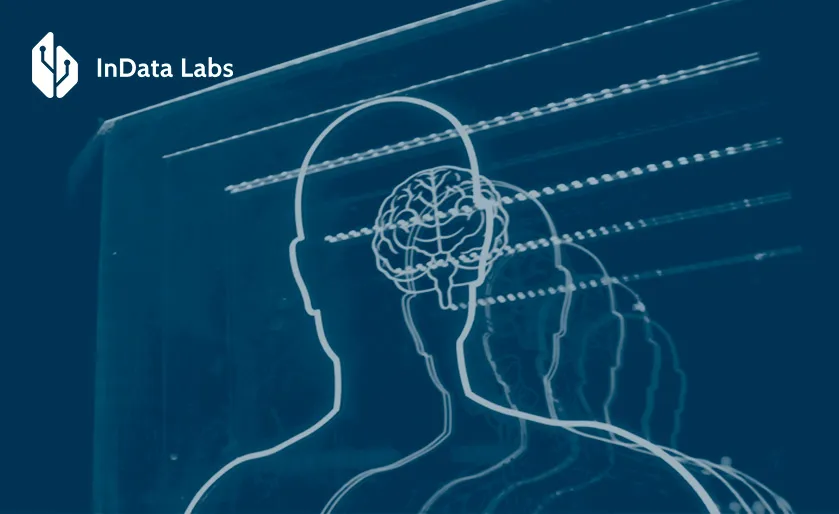Interest in Generative AI trends and their underlying technologies has been growing rapidly in recent times. It is actively used by consumers, and companies are trying to understand how to leverage its full potential.
Nobody doubts that our future will observe far higher volumes of AI-generated content. By 2025, Gartner expects Generative AI to account for 10% of all data produced, up from less than 1% today.
These numbers are bound to grow. The reason is that these technologies can solve problems that were previously thought to be beyond the reach of artificial intelligence. In this article, we will delve into the notion of Generative AI deeper, uncover the potential of this technology, and what all this hype around GenAI is about.
How does Generative AI work?
Artificial Intelligence is generally subdivided into three categories:

However, recently the media has been focused on a specific subset of AI – Generative AI models.
The definition of Generative AI goes like this – it is a branch of artificial intelligence that can create new content and ideas, including dialogues, stories, images, videos, and music. Like any AI, it is based on machine learning models that are pre-trained on huge amounts of data. These types of AI systems learn to imitate the data they have been trained on, and then produce similar content.
GenAI tools create content based on probabilities. For example, when the word «Great» is entered, different nodes state that the word «Great» may be followed by «Britain» or «Wall». The more context given, the more these nodes are trained. If “London”, “Queen”, or “black cabs” appear somewhere, it is very likely to be “Great Britain”, not “Great Wall”.
Generative AI market size & adoption rates for 2023
Generative AI is crucial in today’s world as it expands the creative capabilities of both individuals and industries. 77% of respondents interviewed within KPMG research expect Generative AI applications to have the largest impact on their businesses out of all emerging technologies. Fortunately, we have grabbed the opportunity and are increasing the adoption rates of GenAI. By the end of 2022, the global Generative AI market size was estimated at USD 10.79 billion and it is projected to reach USD 118.06 billion by 2032 with a CAGR of 27.02% during the forecast period.
If we consider the size of companies adopting the Generative AI technology, we will observe that 61.5% of companies with 11-1000 employees currently use it in the workplace, which accounts for businesses within the “small,” “medium”, and “enterprise” categories. Meanwhile, companies with 1-10 people and 1,001 employees and above, show adoption rates of 30% and 39% respectively, which is a massive drop-off.
Returning to individuals, we will see a smaller gap in adopting GenAI tools by different generations. For instance, millennials and Gen Z showed the highest adoption rate of 58% in 2023. Professionals aged 35-44 followed with a 52.1% adoption rate while 43.7% of respondents aged 45-54 said they embrace the technology. The numbers are incrementally growing, which is shown in comparison with 2022 GenAI adoption statistics. The statistics demonstrate a wide usage of the technology by all generations with a higher use by younger generation representatives.
Generative AI trends in 2024
Generative AI technology is picking up steam in 2024 with numerous AI trends appearing today. Let’s have a quick look at what is prioritized in this sphere today.
Advanced personalization
Generative AI is playing a significant role in the increasing personalization of user experiences. Analyzing vast amounts of data, AI algorithms can generate text, images, and other content and recommendations tailored to individual preferences, behaviors, and needs. This personalization allows businesses to deliver highly targeted and relevant experiences to their users, enhancing engagement and satisfaction, forging deeper connections, and delivering tailored solutions.

Source: Unsplash
Conversational AI
Conversational AI has emerged as a significant trend within the field of Generative AI due to its ability to enable natural and interactive human-machine conversations. Its technologies, such as chatbots and virtual assistants, utilize Generative AI models to understand and generate human-like responses in real time. Here’s a good example of a virtual assistant powered by the technology, InData Labs’ Aurora Borea:
Conversational AI will be gaining even more traction soon. And here’s why:

Extensive research in this industry leaves everybody in anticipation of even more natural and sophisticated interactions between humans and machines and wider adoption and further Generative AI development.
Image generators
With advancements in deep learning and neural networks, image generation models have become increasingly sophisticated, capable of producing highly realistic and diverse images. The trend didn’t go unnoticed by anyone, being a highlight of recent times. These image generators have the potential to revolutionize various industries, such as gaming, design, advertising, and art, by automating the creation of visuals and expanding creative possibilities.
Code & app builders
Automating software development workflows with GenAI includes writing and testing code as well as building websites and apps. With the advent of advanced machine learning techniques, these tools enable users to generate functional code and develop AI mobile applications without extensive programming knowledge. This trend empowers individuals and organizations to provide custom GenAI, ML, and Natural Language Processing (NLP) services more efficiently, reducing development time and bridging the gap between technical and non-technical users.
Generative design
Such generators automate designing, simulation, and visualization while optimizing design constraints. Revolutionizing the way we approach design, it enables the creation of optimized and innovative solutions across various disciplines.
Using the technology, designers and engineers can input design parameters, constraints, and objectives into AI systems. The AI algorithms then explore numerous design possibilities, generating a range of options that meet the specified criteria. This approach not only streamlines the design process but also uncovers novel solutions that may have been overlooked otherwise.
Intelligent process automation (IPA)
The year 2023 has seen great use of GenAI to streamline mundane tasks within companies’ workflows. By leveraging Generative AI, IPA systems can understand and interpret unstructured data, extract relevant information, and make intelligent decisions. This enables businesses to automate complex tasks that require cognitive abilities, such as natural language processing, sentiment analysis, and image recognition. As a result, many companies observe a surge in overall performance and make more informed decisions.

Source: Unsplash
Key benefits of Generative AI adoption for your business
The widespread use of Generative AI and its higher adoption numbers across businesses around the globe are not unreasonable. McKinsey’s latest research estimates that Generative AI could add the equivalent of $2.6 trillion to $4.4 trillion in annual economic benefits across 63 use cases.
There are numerous benefits the technology holds, leading to new opportunities, higher competitiveness, enhanced efficiency, and more. Let us dwell on the most prominent Generative AI benefits below:
Automation and efficiency
GenAI is expected to reduce workload by 60 to 70%. It automates repetitive and time-consuming tasks, allowing businesses to streamline operations and improve efficiency. By automating processes such as data analysis, content generation, and customer interactions, businesses can reduce manual effort, minimize errors, and allocate resources more effectively.
Data analysis and insights
AI can analyze vast amounts of data and extract meaningful insights. By leveraging advanced algorithms, businesses can identify patterns, trends, and correlations in data sets that may not be immediately apparent to humans. These insights can inform strategic decision-making, improve forecasting accuracy, and drive business growth.
A good example is Air India’s ChatGPT-based AI software. Chat GPT is a huge LLM development solution able to transform an enterprise’s whole workflow. Air India’s solution can predict flyer behavior, how much they are willing to pay, and where they want to travel, which allows for optimized pricing.
Increased labor productivity
With intelligent assistance, automated mundane tasks, and decision support, your employees can focus on more complex and crucial business tasks. Research demonstrates that combining Generative AI with all other technologies could contribute to a potential 3.3% annual increase in labor productivity.
Personalized customer experience 
For instance, Mastercard has taken advantage of customer service AI chatbot development with GenAI algorithms to provide efficient services to consumers. The chatbots now analyze customer behavior, work with a much wider range of consumer requirements, and provide personalized recommendations.
Risk mitigation & security
It can assist in risk management and security measures. By analyzing data patterns and anomalies, AI algorithms can detect potential threats, fraud, or cybersecurity breaches. This helps businesses proactively mitigate risks, protect sensitive information, and ensure the security of their operations.
Enhanced decision-making
Businesses are armed with data-driven insights and predictive analytics, which enables more informed decision-making. By leveraging AI algorithms, businesses can make faster and more accurate decisions based on objective analysis, reducing reliance on intuition or guesswork.
Cost savings
All the other benefits mentioned – streamlined workflows, enhanced security, better decision-making, in-depth data analysis, and task automation – converge into cost reduction. Businesses adopting GenAI advance both their internal processes and interaction with clients, which entails a boost in profits and decreased expenditure.
Generative AI tools & applications by industry
The Generative AI market map represents a huge scheme comprising numerous elements. The reason for that is its widespread adoption across various industries. It offers a wide range of artificial intelligence apps that already drive innovation, efficiency, and creativity.
Let’s expand on each industry, possible applications of GenAI there, and the benefits its adoption entails.
Finance
Research states that banking is one of the industries that will see the biggest impact from GenAI adoption revenue-wise. This technology is poised to bring a significant efficiency increase in fraud detection and risk assessment. AI-driven chatbots and virtual assistants will transform the bank-client interaction and bring user experience to a new level.
Additionally, Generative AI can assist in generating financial market simulations, aiding in risk management and strategy evaluation for investment firms.
Marketing
Another highly impacted industry is marketing with 38% of advertisers already using AI in 2023 for marketing purposes. After the launch of Chat GPT, many employees switched to this Generative AI tool, and up-to-date 55 percent of marketers in the U.S. make use of ChatGPT integration for their marketing campaigns.
The practice has shown that Generative AI algorithms will make marketing messages more personalized. What’s more, AI is a great help in identifying market trends and developing the most effective marketing campaigns.
Healthcare
Although the healthcare industry shows a lower AI usage percentage, Generative AI is revolutionizing the healthcare industry by aiding in medical image synthesis, enabling the generation of high-resolution and diverse medical images. This is particularly beneficial in scenarios where data is limited, and synthetic images are generated to improve the accuracy of medical imaging analysis. Additionally, Generative AI can assist in drug discovery by predicting molecular structures and generating potential chemical compounds.
For instance, Massive Bio, a biotechnology company, has integrated GenAI tools in the process of recruitment for clinical trials. Today, the company also has an AI-powered chatbot that provides personalized analysis, information on enrollment processes, clinical coordination, and more.
Entertainment and gaming
In the entertainment industry, such tools are used for content creation, enhancing creativity and efficiency. Game developers, for instance, can leverage Generative models to create realistic environments, characters, and textures. This will undoubtedly lead to dynamic and adaptive gaming experiences, reducing development time and keeping players engaged.
Manufacturing
In manufacturing, Generative AI is utilized for product design and optimization. Engineers can employ Generative models to automatically generate and iterate through design alternatives based on specified criteria. This accelerates the product development process and can lead to more efficient and lightweight designs. Such a design approach is particularly beneficial in industries such as aerospace and automotive.

Source: Unsplash
Retail
Retailers leverage GenAI apps for inventory management and demand forecasting. Generative tools can analyze historical sales data and generate predictive models to optimize inventory levels, reducing costs associated with overstock or stockouts. In addition, it can be applied to enhance the online shopping experience by creating realistic product images and virtual try-on experiences.
Education
Thanks to the latest trends in AI, educational organizations can provide intelligent tutoring systems and personalized learning experiences. These systems can generate adaptive synthetic data based on individual student progress and learning styles, providing a more tailored educational experience. Additionally, it can be used to create educational materials such as interactive simulations and virtual laboratories.
Duolingo has implemented the technology to provide learners with smart explanations of why the answer is right or wrong and allow people to practice their conversation skills with simulated characters and situations in the app.
Human resources
The Generative AI benefits in the HR department are undeniable – it automates the initial screening of resumes and job applications, identifies skill gaps and generates personalized recommendations for employee learning opportunities, assists in employee retention, and strives for fair and unbiased decision-making during the hiring process.
Challenges of Generative AI implementation
Despite the tremendous speed of GenAI spread around the world, businesses still face some constraints that slow down AI software implementation processes. KPMG survey results pointed out a lack of skilled talent, lack of investment, and lack of clear business case as the top three barriers to its implementation. Here are the most concerning Generative AI adoption challenges that are worked upon nowadays.
Inaccurate outputs
According to Statista, inaccuracy is the leading risk preventing many people from using the technology. What’s more, 58% of U.S. adults think AI will increase the spread of false and misleading information during the elections in 2024.
Inaccurate, misleading, or conceptually flawed outputs can be due to limitations in the training data, the complexity of the model, or the lack of contextual understanding. Continuous refinement of models, rigorous validation processes, and careful monitoring are the keys to overcoming the challenge and meeting the desired levels of accuracy and reliability.
Data security
The second critical factor according to Statista, data security represents another challenge. Generative AI models require vast amounts of data for training, which often includes sensitive or proprietary information. To mitigate data breaches and unauthorized use, businesses must establish robust security measures at every stage, implement adequate authentication mechanisms, and regularly update security protocols.

Source: Unsplash
Ethical considerations
Generative AI introduces ethical concerns, such as the chances for misuse, bias, or infringement of intellectual property rights. Addressing and mitigating bias in training data and the model itself is critical to ensure fairness and avoid perpetuating societal inequalities. However, achieving fairness in AI systems is a complex challenge that requires continuous monitoring and improvement, careful planning, and adherence to ethical guidelines.
Higher unemployment rates
Many are concerned about AI filling up people’s workplaces. CNBC anticipates that as many as 300 million jobs could be affected with administrative support jobs having the highest proportion of tasks (46%) that could be automated. Legal work, architecture, and engineering lead at the top of possibly most automated jobs as well. Statista research also showed a high number of people concerned about 2023 job replacement by GenAI, though little or no change was also seen.
The future of Generative AI
The future of Generative AI is very bright, owing to its unlimited capabilities and a lot of space for improvement in the sphere. Bloomberg report states it could grow at a CAGR of 42% over the next 10 years, while the GenAI market is expected to reach 1.3 trillion U.S. dollars in 2032.
Businesses also recognize the potential of the technology – statistics show that 71% of businesses will implement their first Generative AI solution within the next two years. That’s why more companies offer top-notch GenAI services, AI-powered customer experience consulting services, NLP services, innovative machine learning ideas, and others. Such a speedy reaching out to high-end solutions entails an increase in revenues of Generative artificial intelligence technology offerings up to $36 billion by 2028.
Widespread adoption of the technology and its continuous improvement are constantly encouraging new trends in AI and top AI project ideas. The key focus of GenAI advancement for the upcoming years is the following:
Cross-domain applications
Generative AI has already demonstrated its potential in various domains, including image synthesis, natural language processing, and music generation. In the future, we can anticipate cross-domain applications, where Generative AI techniques are applied to multiple domains simultaneously. This can lead to innovative and unexpected outputs, fostering interdisciplinary collaborations and breakthroughs.
Human-AI collaboration
The future of Generative AI is likely to focus on human-AI collaboration, where humans and AI systems work together synergistically. AI can assist humans in generating ideas, providing creative suggestions, or automating repetitive tasks, while humans can provide the necessary context, judgment, and creativity that AI may lack. This collaboration will lead to increased productivity, efficiency, and innovation across various domains.

Source: Unsplash
Real-time applications
Generative AI is expected to advance towards real-time applications, enabling on-the-fly generation of content or responses. This has implications in areas such as customer service, virtual assistants, and real-time content creation. Real-time solutions will provide instantaneous and contextually relevant outputs, enhancing user experiences and enabling dynamic interactions.
Transparency and trustworthiness
The demand for explainable and transparent AI will continue to rise. As Generative AI becomes more integrated into critical systems, understanding how and why AI models generate specific outputs becomes crucial. Researchers and developers will focus on developing techniques that facilitate text interpretability, allowing stakeholders to trust and comprehend the decisions made by AI systems.
Ethical fairness
As Generative AI becomes more prevalent, there will be an increased focus on ethical and responsible AI practices. Efforts will be made to address biases, ensure fairness, and mitigate potential risks associated with the use of Generative AI. Establishing guidelines, regulations, and frameworks to govern its deployment will gain prominence to ensure societal benefits without compromising on ethical considerations.
The takeaway
In conclusion, Generative AI has emerged as a powerful technology with numerous benefits and applications across industries. From generating realistic images and videos to personalized content and creative outputs, Generative AI has immense potential to transform various sectors. However, it also comes with challenges such as inaccuracy and data protection, which require continuous refinement and vigilant safeguards.
As the field continues to evolve, it is crucial to fine-tune existing and legacy systems and ensure that Generative AI is harnessed for the benefit of society, while addressing any ethical considerations that arise. With ongoing research, innovation, and responsible implementation, Generative AI has the potential to revolutionize industries, enhance human experiences, and pave the way for a future of unprecedented possibilities.
FAQ
-
The future of Generative AI is promising, with advancements expected in various areas. We can anticipate improved creative capabilities, personalized experiences, human-AI collaboration, chatbots and virtual assistants, and real-time applications. Ethical considerations and explainability will also play a crucial role in shaping its future development.
-
Generative AI encompasses a wide range of examples. Some notable ones include image synthesis, where AI can generate realistic images of human faces or objects. Text generation is another example, where AI can create stories, articles, or even dialogue. Music composition and video generation are also examples of Generative AI.
-
Generative AI is growing rapidly due to advancements in machine learning and deep learning techniques. The field continues to evolve, with new research, innovations, and applications emerging regularly. The speed of growth is significant, as evidenced by the increasing number of papers, conferences, companies adopting it, and investments in the field.
-
While it is challenging to provide an exact size, the Generative AI industry is projected to reach a substantial market value in the coming years. Statistics demonstrate that the global Generative AI market size was estimated at USD 10.79 billion by the end of 2022. With increased investments, research activities, and adoption across various industries, the industry’s potential for growth is significant.
-
Generative AI has numerous applications across industries. It can be used in art and design to create unique and realistic visual outputs. In healthcare, it can aid in medical image synthesis or drug discovery. Generative AI is also used in customer care for chatbot development, entertainment, advertising, virtual reality, content creation, and personalized recommendations.
-
Generative AI finds its usage in various sectors, including entertainment, marketing, healthcare, gaming, education, and E-commerce. It can be applied wherever there is a need for creative outputs, personalization, or automation of content generation. Its versatility allows it to be utilized in many different fields.
-
The three broad applications of AI are natural language processing (NLP), machine learning, and robotics. NLP focuses on understanding and generating human language, machine learning and deep learning deals with analyzing and interpreting Big data, and robotics involves creating intelligent machines that can perform tasks autonomously.
-
Generative AI can assist in writing code to some extent. While it may not be proficient at generating fully functional code from scratch, it can automate certain aspects of the coding process, like generating code templates or providing suggestions. However, human involvement and expertise are still essential to ensure the code’s correctness, efficiency, and adherence to best practices.



